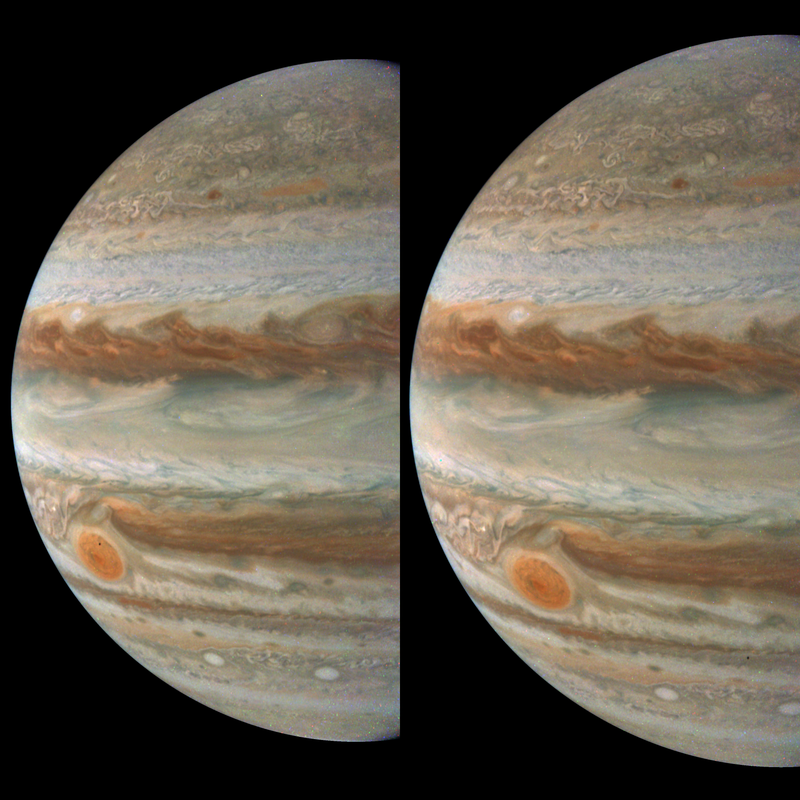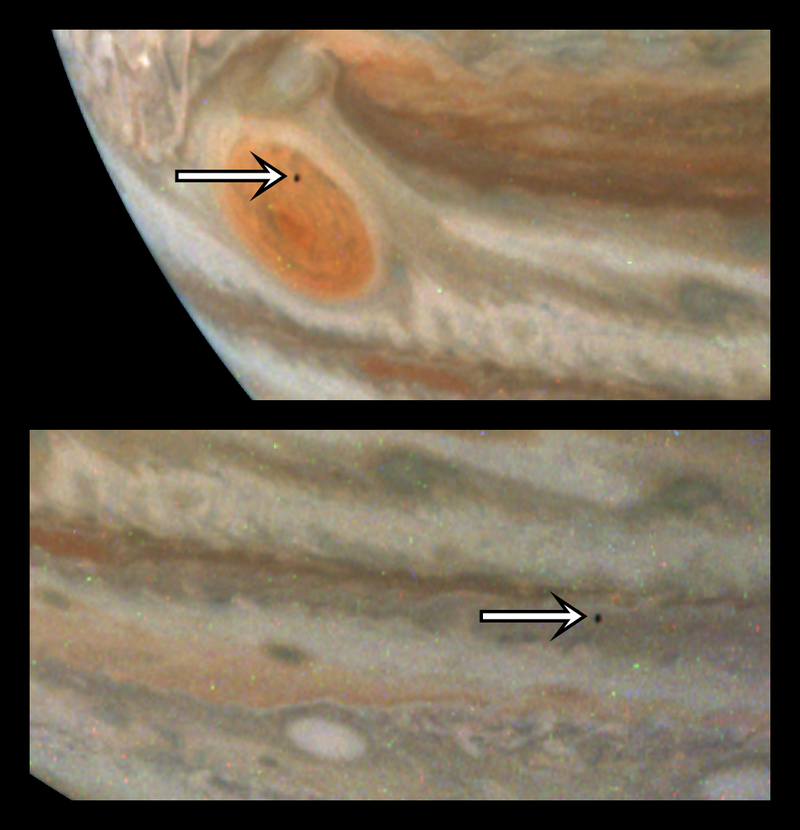Oh, there it is. Jupiter’s unassuming moon Amalthea was spotted in two recent images captured by NASA’s Juno probe.
During its 59th close flyby of Jupiter on March 7, the Juno spacecraft captured its usual stunning views of the giant planet’s swirling winds and colorful belts. The new photos offered an unexpected treat: a rare glimpse of one of Jupiter’s tiny, mysterious moons.

In the first image on the left, Amalthea can be seen as a small dot against the backdrop of Jupiter’s Great Red Spot, which stretches across 10,159 miles (16,350 kilometers). As it continues to orbit its host planet, the moon wanders towards the right in the second image and can be spotted just below one of Jupiter’s colorful belts.
There may not be much to see, but don’t be fooled by this moon’s humble appearance. Amalthea is one of four smaller moons that orbit within the path of Jupiter’s Galilean moon Io. The small moons, Metis, Adrastea, Amalthea, and Thebe, are all oddly shaped because they don’t have enough mass to pull themselves into a proper sphere.
Stretching across 52 miles (84 kilometers) wide, Amalthea is shaped like a tiny celestial potato. The surface of the tiny moon, however, is littered with impact craters, hills, and valleys. Amalthea is also the reddest object in the solar system and it possibly gives out more heat than it receives from the Sun, according to NASA. That heat might be due to Jupiter’s powerful magnetic field, which induce electric currents in the moon’s core, or tidal stresses caused by Jupiter’s gravity.


The Juno spacecraft was about 165,000 miles (265,000 kilometers) above Jupiter’s cloud tops at the time the first image was taken. Juno’s images are available for the public to fiddle with through the mission’s website, and these particular images were enhanced by citizen scientist Gerald Eichstädt.
Amalthea was discovered in 1892 and named after a mythological naiad (a type of water nymph) who nursed the newborn Roman god Jupiter. The moon holds the third closest orbit of all of Jupiter’s known moons (of which 95 are known), and takes about half an Earth day to circle around the giant planet. It’s tiny but certainly mighty.
For more spaceflight in your life, follow us on X and bookmark Gizmodo’s dedicated Spaceflight page.
Source Agencies


